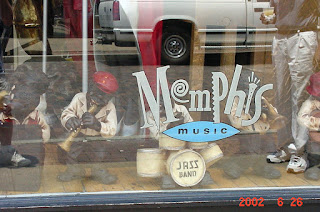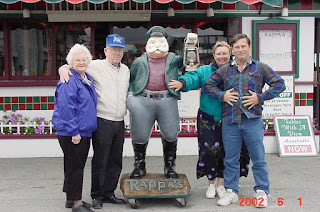Southern Plantations
X-mas for us was an office dinner party in
First stop is
Following Hwy 84 in GA is a pleasant route. The majority of the route follows along a railroad track, and it is very flat and straight as well as a 4-lane road without very much traffic. This all made it enjoyable to cruise along looking at farms and fields. Dropping down along the Florida Panhandle Coastline is Hwy 98 - also known as the "
Touring
The next segment had considerable foul weather so staying on the interstate was in order. Strong winds at times and very heavy rain at intermittent areas made it a little nervous going. Other locations had tornados we learned later. Tom did think that by pushing right through we would minimize the total time we would be inside the weather front. Still - rough going for a little while.
The gardens were the province for Mrs. Martha Turnball throughout her life. The French style gardens grew out from the house over 28 acres. The contribution of slave labor to the construction and upkeep of the plantation, as well as agricultural prosperity and wealth accrued by Daniel Turnball was immense. During peak years of cotton production, as many as 450 slaves worked at Rosedown. After Daniel's death in 1861, the family saw a steady decline in a way of life that could no longer be supported.
Rosedown and two older Turnball plantations were ravaged during the war both by the invasion ofNorthern troops and by the loss of the slave labor workforce. The Turnball/Bowman family, which included the Turnball's only daughter, Sarah, and husband James Bowman, stayed at Rosedown through the war, protecting and farming the property as best they could. This was truly exceptional - most often we have very little was left of these plantations - just the buildings and guesses as to what happened to the inhabitants.
The other state-owned plantation is Oakley Plantation. Nearly 200 years old, this plantation home houses the museum at Audubon State Historical Site. John James Audubon's journal records his arrival in 1821 at Oakley Plantation. The lush, natural setting, with a variety of birds singing throughout the 100-acre forest, still inspires visitors. In these peaceful environs, it is easy to imagine the artist filling his sketchpad with notes and drawings for his famous series of bird illustrations. The tall, airy house where John Audubon stayed is a splendid example of colonial architecture adapted to its climate. Built circa 1806, Oakley predates the period when Southern plantations favored the heavy details of Classic Revivalism. It is distinct for its beautiful simplicity. A
We ended our evening with a drive through St. Francisville's local history, and as we looked at the homes decorated in white lights and trimmed in local evergreen, we remarked on the age and architecture. Most structures had bicentennial markers and private homes often added to the celebrations.
By Saturday morning (the 21st) we were heading to
Our next plantation was the Nottoway, located in
It took 10 years to complete and in 1859 it accommodated the Randolph's eleven children and afforded all the wants and needs of a 7,000 acre sugar plantation. Saved from total destruction during the War Between the States by a Northern gunboat officer, a former guest of the Randolph's, Nottaway stands in a remarkable state of restored beauty.
The Randolph's had 7 girls - 5 of whom were married in the Grand White Ballroom (that we noticed had hand-painted Dresden porcelain doorknobs and
I had found myself thinking of the time before when we had travelled through here. It was about 4 years previously. We had Jessica, our granddaughter, with us and loved seeing the old plantations with here and sharing this country's history. Things were different now. i realized that I was taking in every moment, listening better and seeing more than I had done some years before. I wasn't in such a hurry to rush to the next attraction or plan so far a head that I lost sight of the here and now. I suppose, that is why we are doing better on stopping and slowing down and planning more time in our travels.
We planned to spend about one week in New Orleans during the Christmas and New Year's holidays. We camped at the Navy campground on base - small but nice, with laundry facilities, and we could walk to the commissary and NEX. We always find that people enjoyable and upbeat at base campgrounds. They are also a wealth of information on local happenings in the area. Tom always gathers literature from the Internet on what to do, where to go and special events that may interest us. Sunday was our day off - spent catching up on cleaning, cooking and resting.
Christmas in New Orleans
The traffic was light, and the city was busy with out-of-towners and it seemed everywhere we looked people were doing the same thing we were. We stopped at Johnny's Po Boy, a local establishment for some local cuisine. The restaurant was packed, you ordered at the counter and ate when your number was called. It was a hard choice, but decided on the Shrimp Po Boy sandwich and wasn't disappointed - it was wonderful.
After eating we decided to take a walking tour - self-guided of course. The area is in disrepair and needed a great deal of fixing and general clean up. The buildings are distinctive with Louisiana-style and history of jazz and Mardi Gras. We enjoyed looking at the designs of the buildings and found them to be decorated in the Christmas separates. We walked in the French Quarter: this is a huge tourist attraction, but is also the heart of old
No visit to
We made some friends here at the campground. Their names are Bill and Julie and are from the state of
The next day, December 26, 2002, we decided to go to the Garden District and have lunch at the Commander's Palace. This is a huge historical house that
has been turned into one of
After our magnificent lunch we needed to walk - or at least try to - so we strolled the Garden District. This is a very old and very lovely section of town bordered by Jackson and Louisiana Avenues, between
1134
cemetery also has been filmed in many movies. Aboveground house-like tombs served the same family for generations. They say they buried aboveground because of the watertable being so high. they have walking tour that is a wealth of information, but it is suggested not to walk alone - a number of muggings have taken place and it is not safe to be alone.
We left
Saturday December 29, 2002 late in the afternoon. We enjoyed spending time with Doug, Kendra and the kids. They came over to the campground on base where we stayed for the first two days. Then we moved over and parked our motor home in front of their home the night before we all left for
The city was clean and neat - the buildings were old and had a lot of
history, but were well kept. Everyone we met seemed friendly and upbeat. We enjoyed the city immensely and both agreed we would like to come back here sometime in the future to see more.
We spent New Year's day celebrating Alex's birthday. It wasn't until the next week, but we wanted to spend it together. We all had fun. We had cake and ice cream outside on the picnic table, opened presents, ate and had a good time. The weather was great - not a cloud in the sky and the temperature was around 67 degrees. Picture perfect as you can see.
We knew the holidays had come to an end as we reflected on family and friends we were blessed to be with and share time with and make new memories. We needed to say goodbye to Doug and his family so we could move along to
One of our interests was in seeing
cameras swarmed down on
Another weekend with Doug's family resulted in a very good time for all for us - simply doing things together allowed us all to chat and reacquaint ourselves.
Events moved rapidly at the end of January. We interviewed again in Houston while enroute back to SC. Necessity forces us to be home by Monday and push away we did. 10-12 hours a day driving placed us in Summerville on Sunday at 1pm. And back to work we went.























































